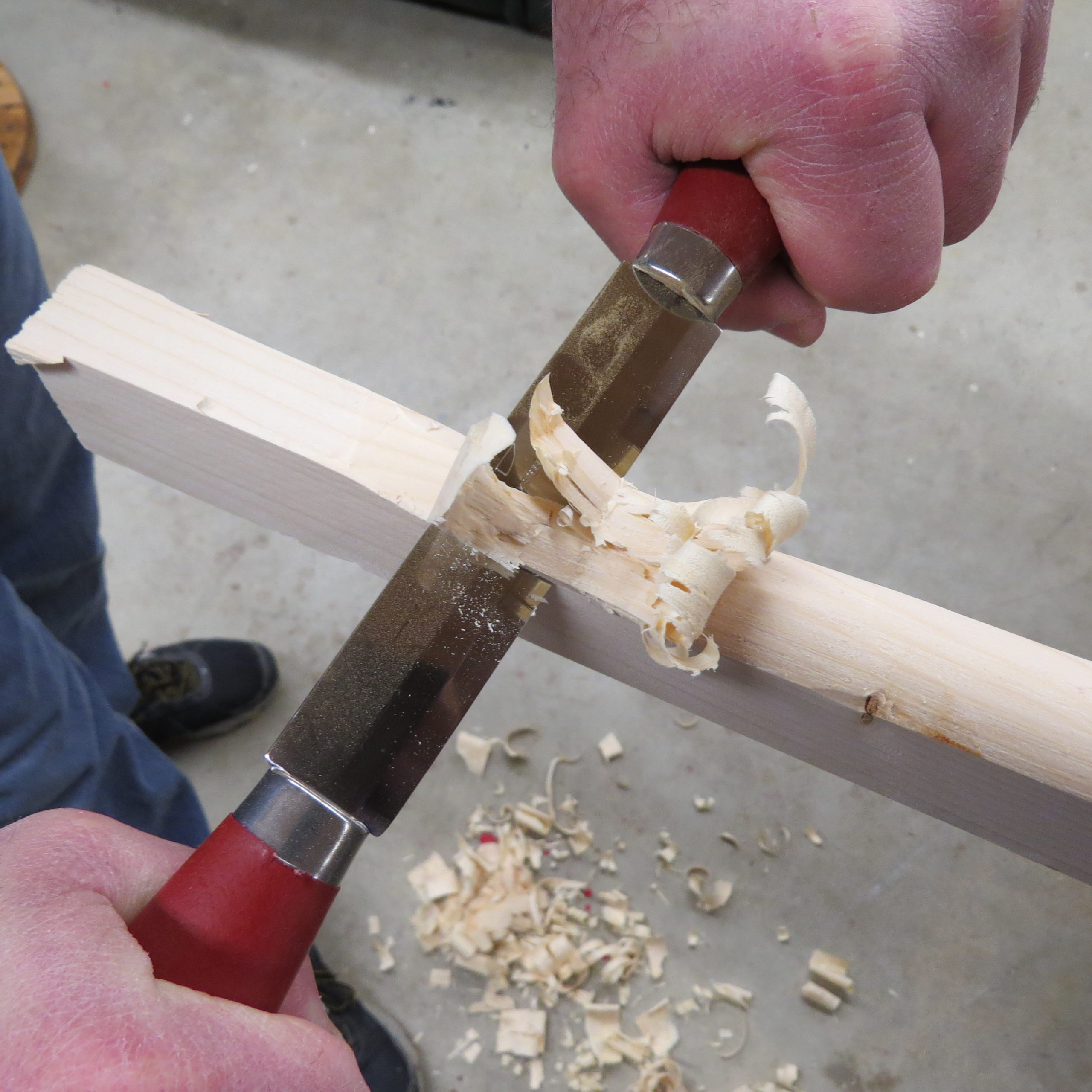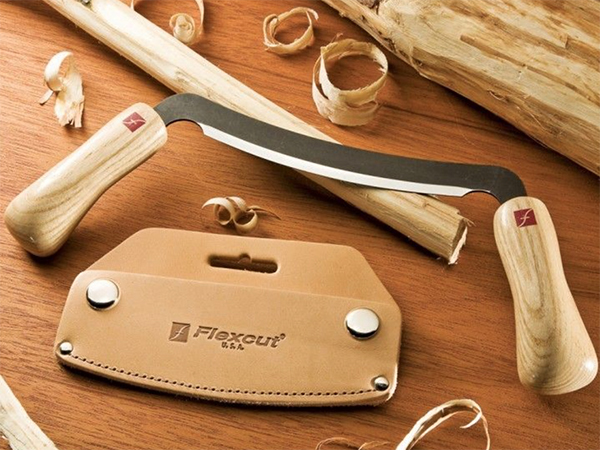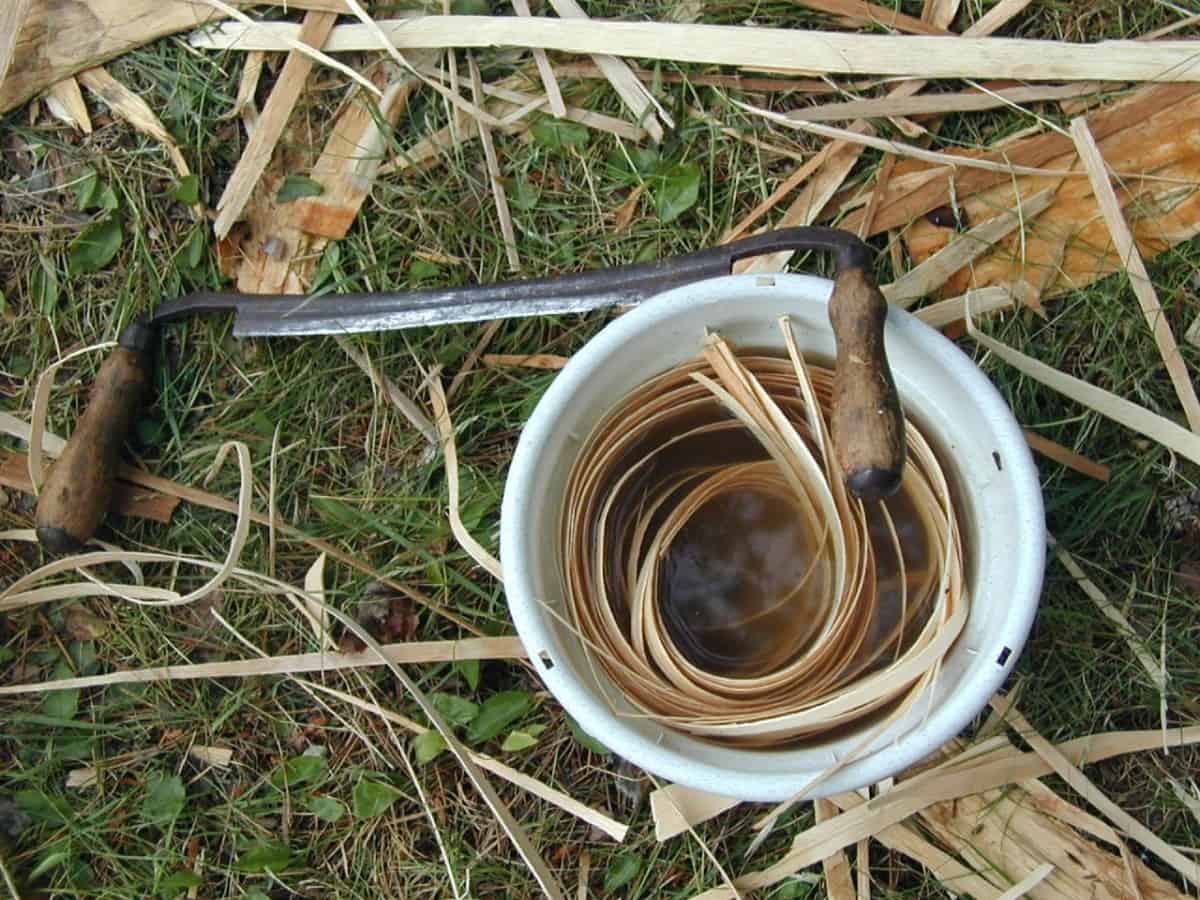I haven't made a drawknife in over 50 years because I find them for a dollar at yard sales ... usually missing one or both handles. The ones I made when I was young were forged from a 1/2" round tire iron, which were probably somewhere between 1080 and 1095 back then.
A draw knife/draw shave/drawknife is almost like a pocketknife - thy come in all sorts of shapes and sizes.
You need to decide what function you will use it for first. As for steel, I would use 1095, but any fine grain type of carbon steel from 1075 to 52100 would work. 26C3 would be fine. Round stock is great for forging and drawing the tangs, but flat stock and grinding the shape works too. I found 1/2" round was perfect for a drawknife. The tire irons were good carbon steel and free back then. You can order round stock from many knife steel suppliers really reasonable prices. Square stock works well, too.
You need to decide blade length and any curvature. Just like anvils and hammers, shapes go by the popularity in different countries and industries - American, London, Swedish, Barrel, etc. Blade edges range for 10" to 3". Below that they are called a spokeshave.
I would suggest making three different shapes and sizes so you have a set for a variety of tasks.
A large
"straight draw" for stripping things down like bark, a medium downward curved
"felled draw" for rounding things, and a smaller a forward curved
"compact draw" (AKA flexcut after the popular brand name) for finishing touches. If only making one, do a flexcut/compact.
Handle shape and angle are also very important. I highly recommend bulbous "light bulb" shaped handles over the straight "broomstick" shape. They give much more finesse in control and just plain look cooler. Handle angle varies by task. The handle angle ranges from straight in line with the blade edge to 90°, and may be parallel to the blade edge or angled down. I like a 45° to 60° angle to the edge and about 15°-20° downturned for finer control in shaping things.
Handle attachment is pretty much te same as a chisel or screwdriver - it can be as simple as two scales and pins, to forging the tang back as a ball or tabs over a steel washer, to a threaded pommel.
Sharpening is pretty basic, but you want an edge the is very clean and smooth.
Here are some articles that will help you a lot.
Drawknives Are A Woodworker's Best Friend And One Of Many Unique Knives Craftsmen Use Regularly

blademag.com
Are my curved- and flat-edged drawknives intended for different tasks?

www.woodworkersjournal.com
Here at Knifepulse, we talks about everything knives. You may be thinking of hunting knives, cooking knives, or maybe even combat knives. But today, we’re going to look at something

knifepulse.com

www.bing.com
Are my curved- and flat-edged drawknives intended for different tasks?

www.woodworkersjournal.com




